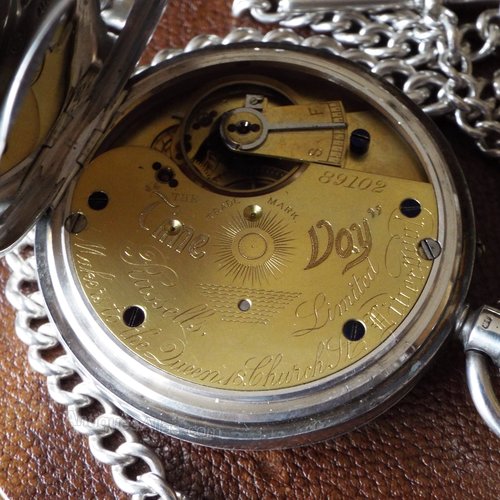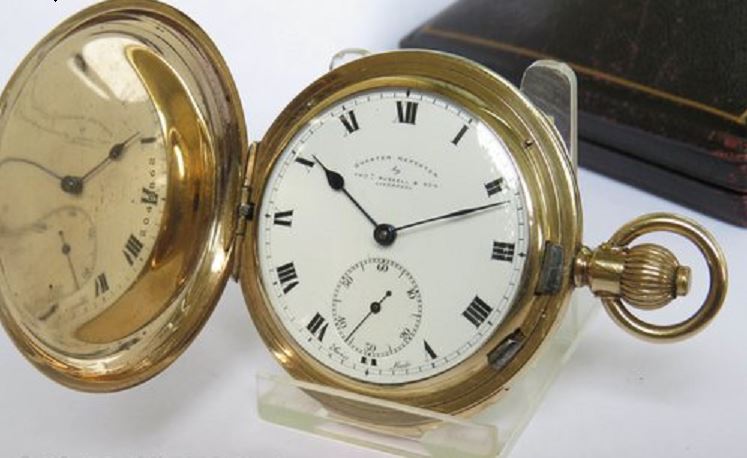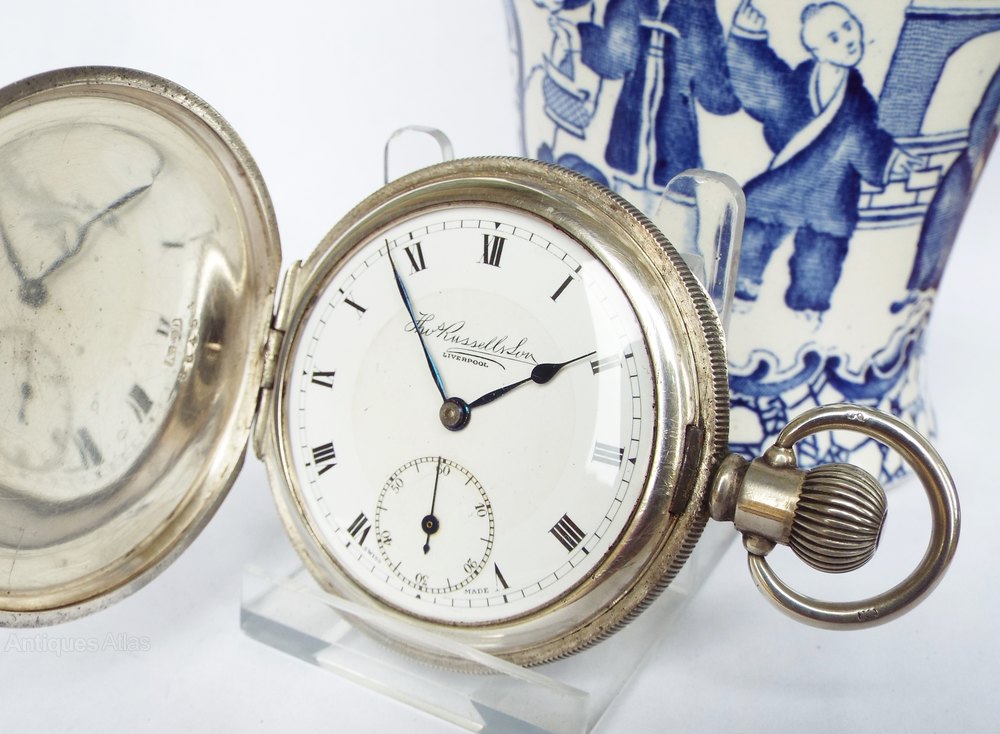In the 18th century, farmers and agricultural employees who wanted to supplement their income during the dark winter months could produce watch components in their home workshops. It was a thriving cottage industry in and around Lancashire, with the components sold on for watchmakers to assemble. It was during this period that the original Thomas Russell was born (1780) in what is now known as Cumbria. He worked as an outworker or journeyman watchmaker before setting up independently in Lancaster in 1811. Thomas was the founding father of what was to become a watchmaking dynasty, which became Thomas Russell & Son.
Liverpool
The whole area around Liverpool was a hive of watchmaking activity at this time. Hundreds of outworkers were making one or two individual watch components in their cottages. These were then collected and taken to the factory for assembly. Thomas continued as a watchmaker in this location until his death in 1830. The business was taken over by his son, Thomas. He moved the business to Liverpool in about 1848 and launched his range of ‘Time ‘O Day’ watches. Liverpool was a major seafaring port at the time. The sale of ships’ clocks and chronometers grew to become a significant source of income for the business. Thomas Russell was listed as a watchmaker in 1848 at 20 Slater Street, Liverpool and later at 30 Slater Street, Liverpool. Around 1877, the company moved premises to 18 Church Street, Liverpool (“Pocket watches : 19th & 20th century” by Alan Shenton).

Around 1860, the business was taken over by his two sons, Thomas Robert Russell and Alfred Holgate Russell. At this point, the business effectively split. Thomas changed the name of his half to Russell, Watch & Chronometer Manufactory with branches in Liverpool, Toronto and London. His plan was to provide chronometers to the booming shipping industry, which sailed from these ports. The partnership between the brothers officially ended in 1878 (“The Gazette” of 18th October 1878). There are conflicting reports about who continued with the original business name, Thomas Russel & Son. However, the consensus is that Alfred continued with the company name, Thos. Russell & Son. At this point, he introduced the famous Russell Hunter watches with their trademark “Tempus Fugit” on the dial.

Royal Warrant
After 1878, T.R. Russell continued operating as proprietor of the Russell Watch and Chronometer Manufactory at Cathedral Works, 18 Church Street, Liverpool, with additional addresses in Piccadilly, London, and Toronto, Canada. In 1894, the business became Russell’s Ltd. From that point, the company appears to have transitioned into a retail jeweller, maintaining branches in Liverpool and, by the early 1900s, also in Manchester and Llandudno.
Alfred Russell carried on under the name Thomas Russell & Son (Alfred Russell & Co). In 1880, the firm was listed as watch and chronometer manufacturers, machine-made keyless lever and jewellery merchants, holding appointments to Her Majesty the Queen, H.R.H. the Duke of Edinburgh, and The Admiralty. By the following year, their listing expanded to include importers of Swiss watches, musical boxes, and related goods.
Originally based at Sandon Buildings, Post Office Place, the company later moved to 12 Church Street, Liverpool, and subsequently to Holborn, London. Eventually, the business was converted into a limited liability company, and by 1938, it had become known as the Thomas Russell & Son Watch Co. Ltd.

Iconic brand
It’s a long story with many Thomas’ involved, and it takes a bit of mental effort to track them throughout the company’s history. I’m still not clear on the exact history of the firm. However, Thomas Russell & Son is certainly synonymous with the Lancashire watchmaking industry, and it’s an iconic brand for watch collectors. I will certainly be adding a Thomas Russell & Son pocket watch to my wish list. It will be an antique full hunter pocket watch, featuring the ‘Time ‘O Day‘ branding on the movement and the ‘Tempus Fugit’ trademark on the dial.
Related content
Thomas Russell & Sons at the British Museum.